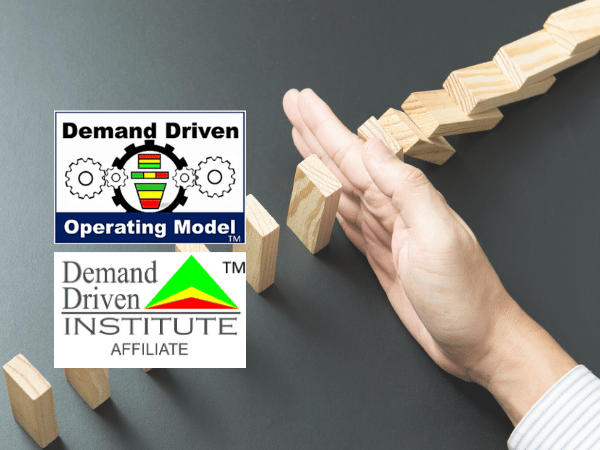Introduction
The Demand Driven approach put a strong emphasis on two main principles:
- Variability, uncertainty, complexity and ambiguity (VUCA) are everywhere
- “All benefits will be directly related to the speed of FLOW of RELEVANT materials and information” G. Plossl
The first item has never been truer in this time of crisis. Forecasts are virtually impossible to make -even with the strongest AI neural networks set up right before the crisis-, we have very few lasting information on how suppliers or clients are faring, we have a lot of medical leave due to COVID, nobody knows how nor when demand will start to kick again and in which volume, nor how our personal lives will be affected in a few days… So now, leaders have to lead and take a collaborative stance on the risks they are willing to take with their company to create the momentum in their teams to face the challenges and not cower before them.
The second item is what will make the difference between a fast and strong recovery and a slow and painful one. Being able to sense and react quickly and strongly to the real demand when it will come back is where a company might very well separate itself from the competition.
Demand Driven Operating Model Adaptation
This article targets companies that already operates with a Demand Driven Operating Model (DDOM). The DDOM configuration is an ongoing process that should be reviewed regularly through the Master Settings (within DDS&OP). Here are six quick tips to adapt your DDOM during those times of uncertainty and volatility:
-
-
- Reevaluate your portfolio of products and positioning model: Has this crisis altered the landscape so dramatically that it requires a fundamental rethinking of the model? Do you need to remove some markets decoupling points, or create some where you know the suppliers will be multiple and not really reliable?
- Up your variability: For strategic products, review your setting: a lot of them may need to switch to the “high variability” category. However, tread with care: make sure you applied tip #1 first so you don’t create a disastrous situation for yourself. You can also create a dedicated buffer profile with very high variability factor ratio. It is not as explicit in the book, but you can have a variability factor way above 1.
- Low variability factor = 1
- Middle variability factor = 1.5
- High variability factor = 2
- Shorten your horizons: You want to be the most reactive you can be, shorten your Average Daily Usage calculation. Use a horizon that will give you a better shot at sensing demand and quickly adapting to it. You do not want to use a 6 months horizon – either with historical data or forecasts.
- Historical data for more than a few weeks are not relevant
- Forecasts are highly unreliable right now especially mid/long-term ones
- Check your Lead-times: Do you remember this setting? Yes, the one in your master data that you check once every 2 year… It is VERY important to check them and adapt if necessary, especially for purchased product. Get in touch with your supplier and ask them about their current LT and how they feel about it in term of reliability.
- Reduce MOQs: If possible, try to reduce MOQs. Your suppliers might not be able to send you the usual full truck load – but in this context of raw materials shortages a half empty truck will do good enough. Even better, the CFO will see the cash to cash cycle stay sane. The same applies in manufacturing, to be quick and responsive, do not add yourself some variability by sticking to auto-applied constraints. They are fine in a “normal” context. We are not in a normal context.
- Anchor and routinize the easier collaboration: Have you noticed how much smoother the transversal collaboration is in this time of crisis? Usual silos have been brought down by necessity; sales, manufacturing, purchasing are meeting every day: it is the time to make the best of it and to anchor it for later:
- Include sales people in your DDS&OP team through daily focus if they are not already. This is how you will decide to put DAFs on your ADUs which, even with shorter horizons, may well stay out of focus. It is also how you will be able to react better in manufacturing and sales.
- And last but not least, it is how everyone will get to understand how this seemless collaboration and focus on the relevant information makes the whole organization a whole lot more efficient and reactive. Use the opportunity to set up a true DDS&OP organization!
-
Conclusion
Several of our customers are reporting how this crisis is actually an opportunity for their Demand Driven journey:
- the parts / plants under DDOM are a lot more reactive than most of the others
- the top management team has no difficulty focusing on the true bottleneck (was in procurement in Jan/Feb, is in sales or in employees presence right now) and align all the efforts consistently, and they appreciate a lot the visibility brought by the DDOM.
So, it is time for you to shine: show you can SENSE and ADAPT very quickly following the 6 tips.
Antoine GAUTIER & Anaïs LEBLANC, Citwell, DDI instructors.
